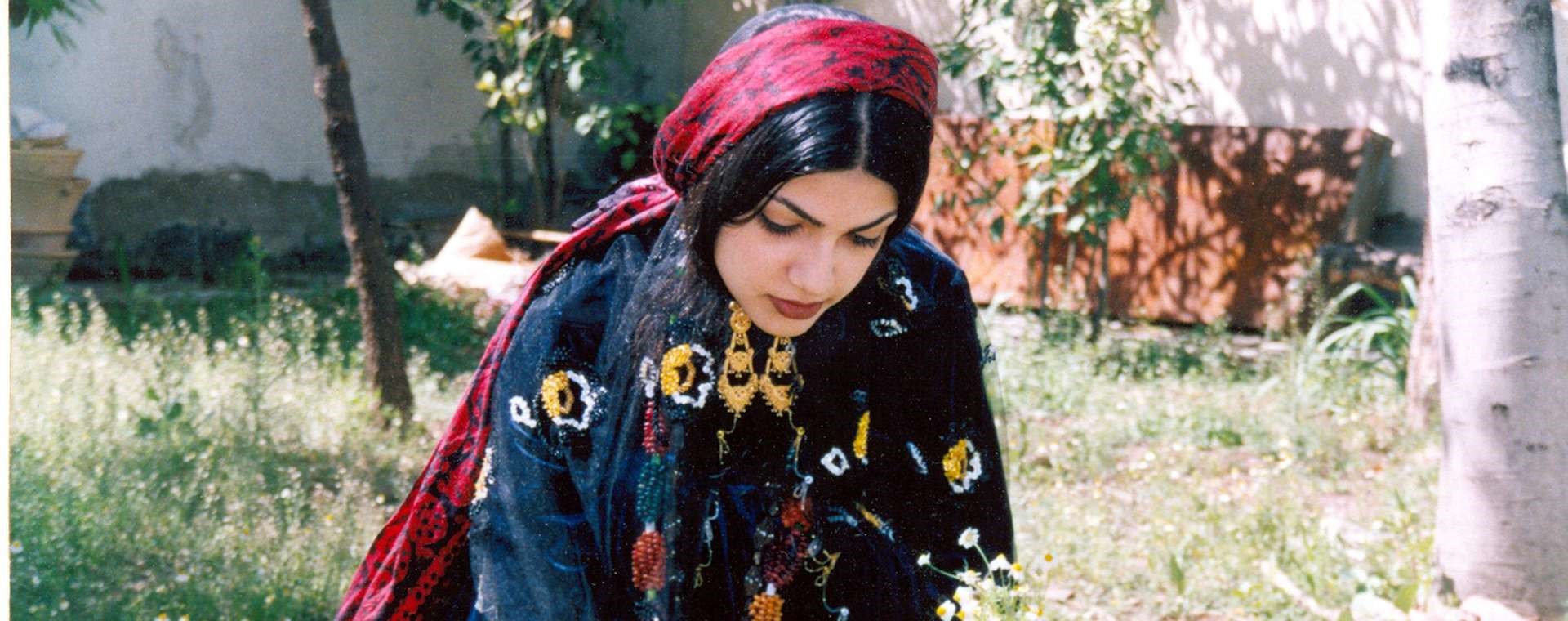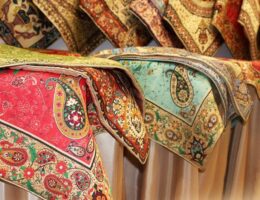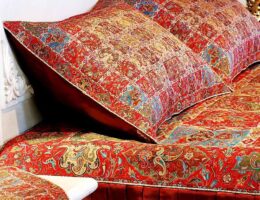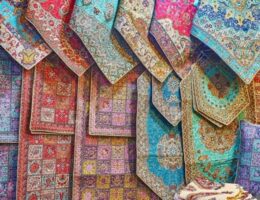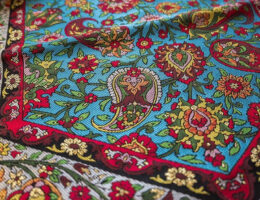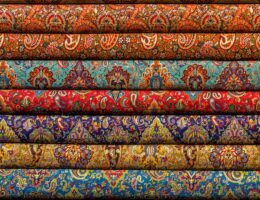IRAN ART EXHIBITION: COLORFUL TRADITIONAL IRANIAN CLOTHES AND SOME TIPS FOR TRAVELERS
Due to the fact that human beings have made unceasing efforts for their needs and the desire for beauty is high according to the type of their creation, so the need to wear clothes has always been raised and one of the arts that has existed.
The antiquity of clothing tailoring shows its importance and therefore shows who tried to keep this art alive in Iran, and we must also update it and give Iranian originality to it.
The art of sewing in Iran is very diverse due to different ethnicities, so we should make the most of this opportunity for diversity in Iranian art and try not to forget our ancient arts.
Iran has a long history of civilization, a big population, and a vast territory which results in different ethnic groups having their own special outfit. These clothes differ based on the region and culture of every group. Political and religious beliefs also determine what people should wear and vice versa. In this article, we pay more attention to what different ethnic groups wear; in other words their traditional costume.
Qashqai
This tribe has Azeri origin which is one of the Iranian nomadic tribes. Qashqai women are known for their frilly, colorful and long skirts and also long headscarves that are tied beneath the chin along with some hair that covers the upper part of the forehead. Men also wear a round hat made of sheep wool which is typical of this tribe.
Bakhtiari
Bakhtiari costume is diverse in its way and is adaptable to the weather that nomads may encounter during the migration. Men wear long clothes and loose pants which are tied to the feet and wool hats. Colorful frilly skirts along with suitable vests form women’s clothing.
Kurd
IRAN ART EXHIBITION: Kurds have different styles of clothing that depend on where they live. Men and women rather wear a loose dress that is fastened to the hips or waist by a broad belt-shaped fabric. Men wear coats in accordance with their pants and women decorate their scarves with coins and jewelry.
Lur
Although Lur men love to use natural colors in their outfits, women like to wear light-colored feminine dresses that have stripes on their pant legs. After twirling the special scarf around the hair and neck women hang the rest behind their back.
Gilak
The distinguishing feature of the Gilaki dress is the long skirt with horizontal stripes that goes along with long shirts and proper vests. This style of costume is used by the people living in the northern part of Iran in Gilan province. Men are also recognized by a broad cotton belt on their waist.

Mazandarani/Mazani
Women wear traditional skirts and a pair of pants under them. These people also live in the northern part of Iran, Mazandaran province. Cotton shirts and fishing pants along with boots up to the knees are the common clothing for men.
Abyaneh
Abyaneh is a village near Isfahan city. In this village, the elderly still wear their traditional dress which consists of a long skirt down to the knees and a long flowery headscarf. Men in this region wear loose black pants, colorful vests, and wool hats.
Southern People
Women in the southern coastal region of Iran, Bandar Abbas and Qeshm Island, are well-known for their chador and colorful masks that cover the area around the eyes. They use these masks to protect their eyes from sunlight and sand.
Baloch
They live in the southeastern region of Iran which has borders with Pakistan and Afghanistan. So people are expected to wear similar dresses. Women wear colorful clothes down to their knees and decorate themselves with brooches, necklaces, and long scarves. Long shirts, black vests, and white turbans are common men’s clothing.
Turkmen
Men wear wool hats which protect them from cold weather, and that is their typical, well-known part of clothing. Long headscarves with strings on the sides and long tight skirts are what women wear in this region. Persian miniature painting
IRAN ART EXHIBITION: The dress code of every country is a cultural difference that may seem a bit intimidating or strange at first but should be followed if you want to feel more comfortable and blend into the crowd. Being an Islamic country, Iran has a specific dress code that must be followed by the travelers as well as locals.
Due to all the rumors spread throughout the media Iranian dress code has become one of the travelers’ main concerns. However; the Islamic rules about clothing are not as strict as they may initially seem. Against the common belief women in Iran appreciate colorful clothes and have a great sense of fashion, choosing stylish clothes while following the dress code.
WHAT TO WEAR IN IRAN
Here we’re about to provide you with a complete guide on how exactly the Iranian dress code is and how flexible it can be.
After the Iranian Revolution in 1979 Islamic rules were legislated, requiring women to wear “Hijab”. In Islam, Hijab refers to modest dressing, specifically covering the head.
At the beginning, most of women were used to wear “Chador”, a long piece of black cloth covering their whole body from head to ankles.
Later on most of women wore “Manteau” (a long coat) instead of Chador and covered their hair with shawl (head scarf). As time went by Manteaus became shorter and people started wearing vibrant colors. Today Iranian women wear short Manteaus or Manteaus without buttons over a shirt and jeans or long skirts and cover their head with colorful Shawls.
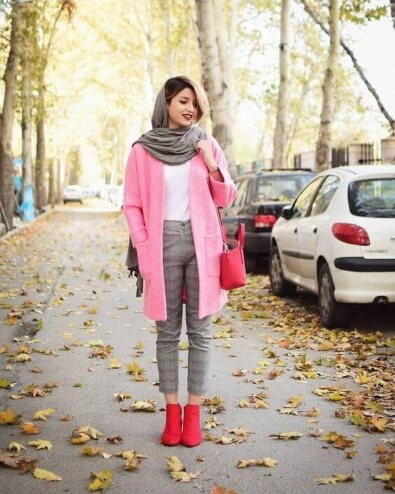
Hijab
Hijab refers to modest dressing in Islamic vocabulary. Nowadays, it mostly refers to covering the head. All Iranian women and tourists are obliged to cover their hair or wear hijab in public areas. Many Iranian women choose to only cover up the top of their head and let a little hair out from the back and front of the head scarf. The most common way is to use a head scarf that you can easily find in local shops, but it’s also possible to use hats especially during winter. Hijab may also refer to covering the body and dressing according to the Iranian dress code as explained in this article.
Do tourists have to wear hijab in Iran?
Like any other country in the world, most of the general laws in Iran have to be followed by travelers. As an Islamic country, there are laws regarding women’s clothing in Iran that must be followed by travelers as well. All women regardless of their nationality are obliged to follow these rules requiring them to wear hijab; IRAN ART EXHIBITION: however, the rules are not as strict for travelers and their unfamiliarity with Hijab is taken into account. Note that women are required to wear Hijab as soon as they get off the plane in an Iranian airport.
Indoor clothing in Iran
Men and women are only required to follow the dress code in Iran in public areas. Therefore, travelers and locals can freely choose their clothing when they’re inside someone’s house or in a hotel room. However; if you’re invited to a local’s house you may respect their beliefs and avoid wearing revealing clothes. You can also take off your Hijab in women-only areas such as beauty salons and gyms. Note that inside cars, hotel lobbies and restaurants are considered public areas.
